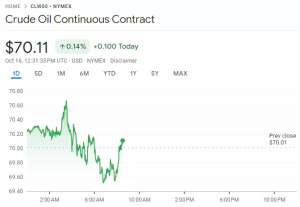Oil And Gas Markets Face Mixed Signals Amid Middle East Tensions, Lower Demand Forecasts, And Weather Impacts
Image Source: Unsplash
The energy market is clearly reflecting a mix of geopolitical tensions and economic factors impacting both supply and demand. The recent stabilization of WTI crude oil around $70 per barrel, after a sharp drop, indicates that while fears of a major supply disruption due to the Middle East conflict have somewhat eased, there remains significant uncertainty. The demand outlook, particularly due to lower growth projections from OPEC and the International Energy Agency, signals a potential slowing of the oil market next year, driven in part by weaker demand from China.

On the natural gas front, declining prices following the recent peak are largely attributable to reduced demand caused by mild weather forecasts and Hurricane Milton's impact on power demand. Additionally, the larger-than-expected increase in natural gas inventories suggests there may be further downward pressure on prices as we move into milder weather in key regions.
Overall, the market is navigating a complex landscape where geopolitical developments, weather patterns, and economic forecasts are all at play. Investors and analysts will likely continue monitoring these factors closely, especially upcoming US crude inventory reports and OPEC's evolving projections, to gauge future price movements and market stability.
More By This Author:
Global Markets Navigate UBS Forecasts, Geopolitical Tensions, And Oil Price Shifts Amid Economic Uncertainty
Global Rig Counts Show Stability With Regional Variations: Potential Mixed Impact On Crude Oil Prices
Market Uncertainty Deepens As China Demand, Geopolitical Tensions, And Corporate Moves Shape Today’s Headlines
Enjoyed this article? Invest in a subscription to expand your horizon towards advanced wealth creation.
Visit our more




